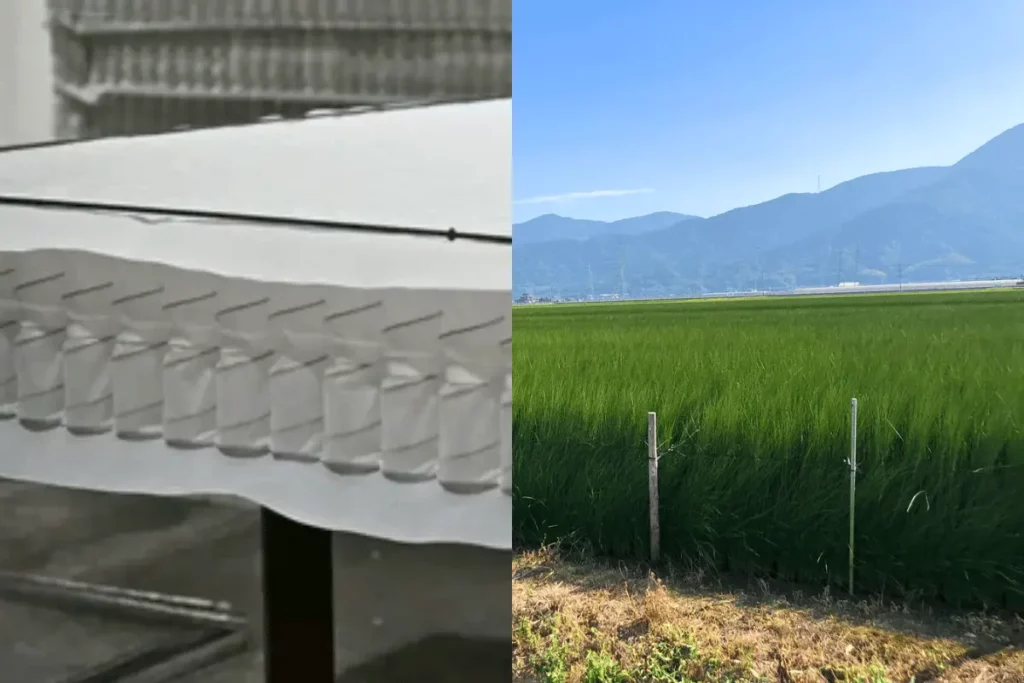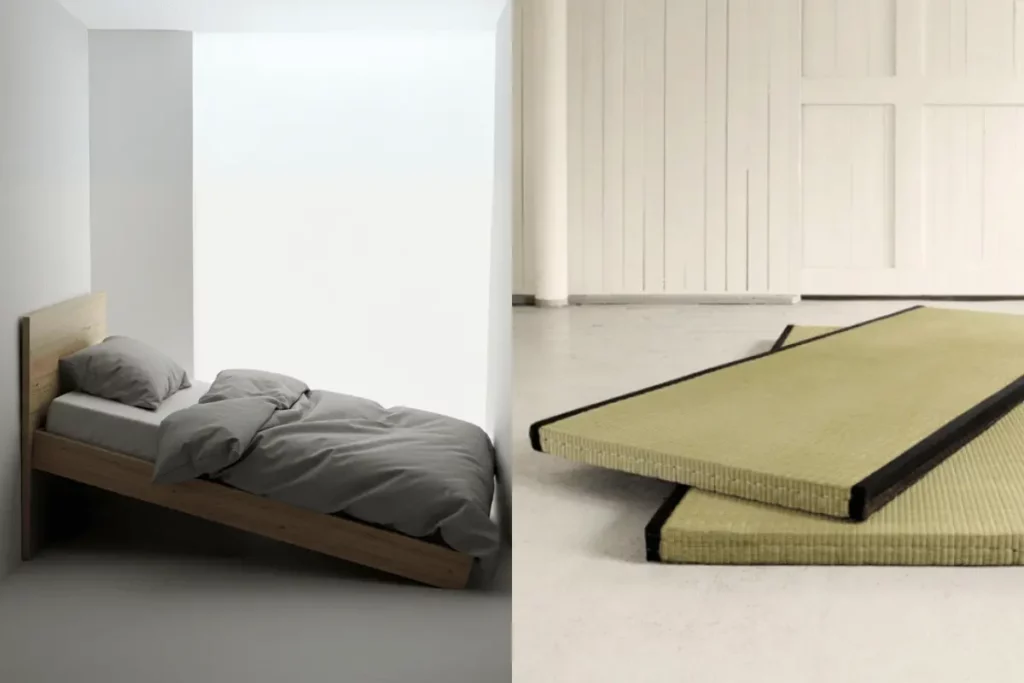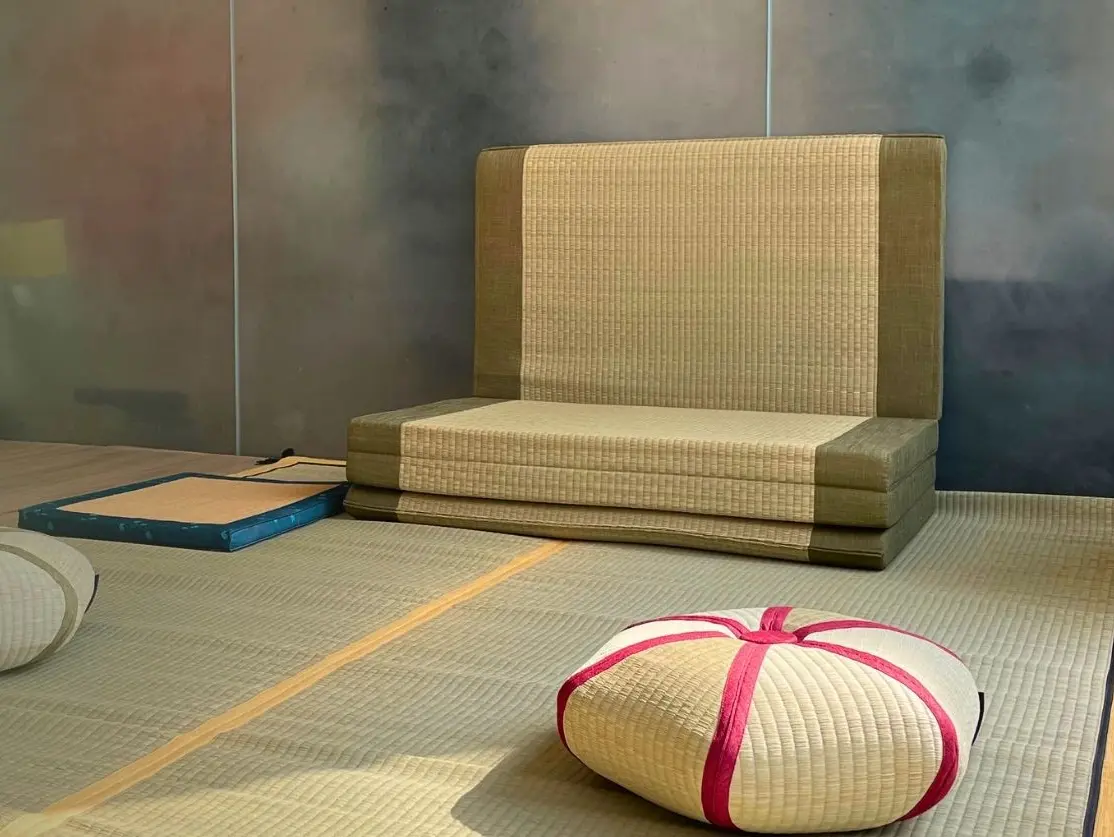The choice of a sleeping surface can have profound implications for health, comfort, and overall well-being. While traditional mattresses have dominated the global market for decades, Tatami Mats—a staple in Japanese culture—are gaining attention for their unique benefits and design. Below, we examine the key differences between Tatami Mats and traditional mattresses, offering insights to help you make an informed decision.
1. Composition and Materials

Traditional Mattresses:
Most conventional mattresses are constructed from a combination of materials, including springs, foam, memory foam, latex, and synthetic fabrics. While these materials offer options for varying firmness levels and motion isolation, they often include chemical treatments or synthetic additives, raising concerns about off-gassing and long-term durability.
Tatami Mats:
Tatami Mats are crafted primarily from natural materials, such as Japanese Igusa grass and rice straw. Igusa grass is known for its durability, moisture-wicking properties, and natural scent, which is believed to promote relaxation. Tatami offers a minimalist and eco-friendly alternative to the synthetic-heavy construction of modern mattresses.
2. Support and Spine Alignment

Traditional Mattresses:
A wide range of traditional mattresses caters to different needs, from firm orthopedic designs to plush, pillow-top styles. However, some models, particularly overly soft ones, may cause the spine to sink and misalign, leading to discomfort or long-term back issues.
Tatami Mats:
Tatami Mats provide a firm, uniform surface that promotes natural spinal alignment. Their supportive structure helps distribute body weight evenly, reducing pressure on the back and joints. This feature is particularly beneficial for individuals seeking relief from back pain or those who prefer firmer sleeping surfaces.
3. Climate Control and Temperature Regulation

Traditional Mattresses:
Many traditional mattresses retain heat, especially those with memory foam layers. Although some advanced models integrate cooling gels or breathable fabrics, they may still trap warmth, particularly in humid climates.
Tatami Mats:
The natural composition of Tatami Mats, especially Igusa grass, allows for excellent breathability. They regulate temperature effectively, keeping you cool in the summer and warm in the winter. This natural thermoregulation makes Tatami Mats ideal for varying climates and seasons.
4. Space Efficiency and Design

Traditional Mattresses:
Traditional mattresses are often bulky and require dedicated bed frames, making them a less flexible option for smaller spaces. Additionally, their fixed size and weight limit their versatility in multi-functional living spaces.
Tatami Mats:
Tatami Mats are lightweight and portable, making them easy to move, store, or repurpose. In traditional Japanese homes, Tatami Mats often serve as multipurpose flooring, adding a minimalist aesthetic. When not in use, they can be stacked, freeing up valuable space—an attractive feature for modern urban living.
5. Longevity and Maintenance

Traditional Mattresses:
The lifespan of a traditional mattress varies by quality, but most require replacement after 7-10 years. Over time, they can sag, collect allergens like dust mites, and lose their supportive properties.
Tatami Mats:
With proper care, Tatami Mats can last decades. Regular airing and cleaning help prevent mould and maintain their structural integrity. Unlike traditional mattresses, Tatami Mats do not trap allergens, making them a healthier choice for individuals with sensitivities.
Conclusion
The choice between a Tatami Mat and a traditional mattress ultimately depends on individual preferences, lifestyle, and health needs. Tatami Mats offer a sustainable, firm, and versatile alternative, rooted in centuries of Japanese tradition. On the other hand, traditional mattresses provide a wide range of options to suit specific comfort levels. Understanding these differences will help you choose the sleeping surface that aligns best with your priorities.
